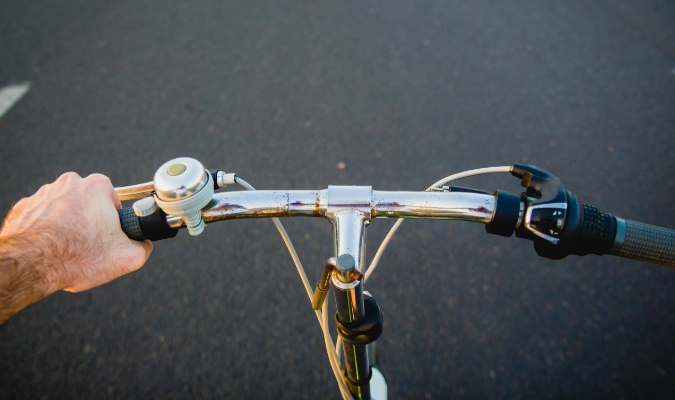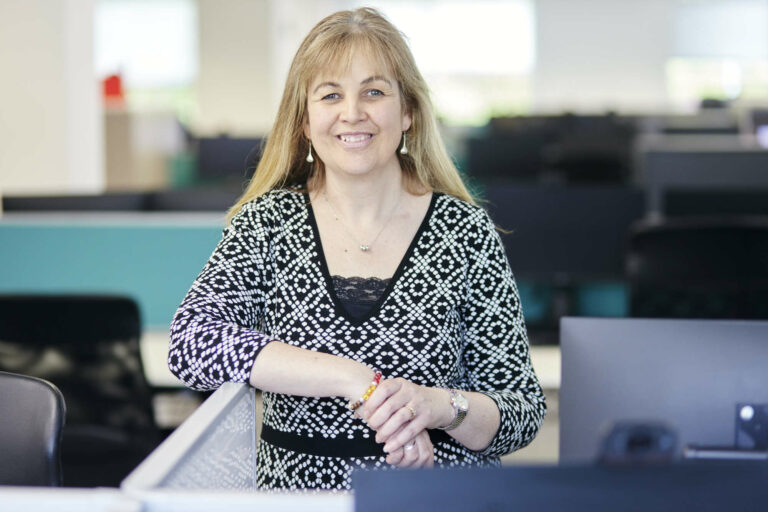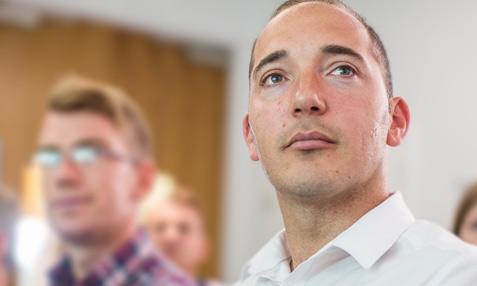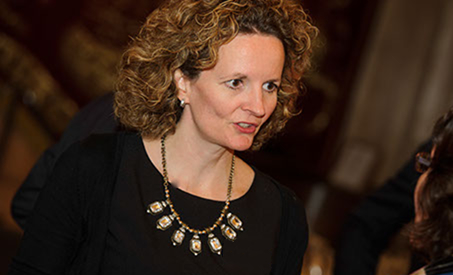Even though daylight saving time is helping a bit with the winter blues our days are getting shorter and by the time most of us are finishing work it is already dark outside. That means commuter cyclists need to be extra careful and make sure they have the right equipment to ride with limited visibility whilst making sure they are sufficiently visible to other road users including cars, scooters but also pedestrians.
A lot of incidents happen this time of year because of decreased visibility. We have prepared a piece to remind cyclists of all the things they can do to keep themselves safe but also what to do in the unfortunate event that they are involved in an incident.
Safety first – How to cycle safely in the dark
Use proper lighting: Install bright front and rear lights on your bicycle. Make sure they are in good working condition and use fresh batteries or charge them regularly. It’s not a bad idea to carry spare batteries with you in case your lights run out of charge mid-journey.
Wear reflective gear: Dress in reflective clothing, accessories, and gear. Hi-vis materials will make you more visible to drivers, especially when car headlights shine on you.
Use reflective tape: Apply reflective tape to your bike’s frame and wheels to enhance your visibility from all angles.
Choose well-lit routes: Plan your route in advance and opt for well-lit roads and bike paths whenever possible. Avoid poorly lit or deserted areas.
Follow traffic laws: Obey all traffic rules and signals. Use hand signals to indicate turns, and be predictable in your movements.
Stay alert: Pay close attention to your surroundings. Watch for cars, scooters, pedestrians, and other cyclists who may not be as safety conscious or as visible as you. Be particularly cautious at intersections and driveways.
Assume you’re not seen: Never assume that drivers see you. Ride defensively and be prepared for unexpected movements from vehicles.
Avoid distractions: Don’t use headphones or other distractions that might reduce your awareness of your surroundings.
Maintain your bike: Ensure your bicycle is in good working order, with functional brakes, tyres, and gears. A well-maintained bike is safer.
Carry identification and a phone: Always have some form of identification with you, and carry a charged mobile phone for emergencies.
Stay informed about the weather: Check the weather forecast before heading out. Be prepared for changes in weather conditions, like rain and fog, which can affect visibility and road conditions.
Maintain a safe distance: Just because drivers and passengers are supposed to check before opening a door does not mean they always will, so try to keep a safe distance from parked cars to avoid getting hit by opening doors.
Carry essential tools: Bring basic tools and supplies such as a spare tube, puncture repair kit, pump, and an allen key set to handle minor mechanical issues on the road.
Be prepared for emergencies: Consider carrying a basic first aid kit and know how to use it.
By following these tips and using common sense, you can significantly reduce the risks when cycling in the dark and enhance your safety on the road. It goes without saying but always wear your helmet!
What if I have an accident when riding alone?
Assuming you are able to do so, your first priority should be to move yourself and your bicycle away from the road and traffic into safety and where other road users will be able to see you.
In the event of a collision involving any damage or injuries, exchange your name and address with the other person. Where a motor vehicle is involved, note the registration, make and model, and ask for the driver’s insurance information and the vehicle owner’s details, as you would in any traffic incident scenario.
If you can, use your phone’s camera to document the accident scene, ask for witnesses’ contact details, and ask them to send you any footage they may have if they were recording. Also look around to see if there are any CCTV cameras nearby.
If anyone is injured, or if the other party drives off without leaving their details, or if you think the driver is under the influence of drink or drugs, you should call the police.
If your own injuries are significant, or if you were knocked out, hit your head, or have started feeling nauseous or dizzy, call for an ambulance. Do not try to get back on your bike if there is a chance you may have suffered a head injury. If your injuries are less severe, seek appropriate medical advice when you can..
What if someone else has an accident?
When riding with a group and there is an incident, or if you witness another cyclist getting injured, follow these steps:
Prioritize safety: Ensure your safety, the safety of your group members, the ongoing safety of the injured person, and the safety of other road users. Prevent additional accidents by using group members to alert other road users to the accident scene. Secure all injured parties from further harm, and avoid moving anyone if there is suspicion of a spinal injury.
Determine first aid knowledge: Check if anyone in your group or at the scene has first aid qualifications and follow their instructions. If you have a first aid qualification, apply the procedures you’ve learned.
Contact emergency services: Even with limited network coverage, you may still be able to make an emergency call. Be prepared to provide your location, details of the incident, and any information about the injured person. If you have the “what3words” app on your phone, use that to help pinpoint your location to the emergency services. If no one has first aid knowledge and you’re concerned about the injured person’s condition, the emergency telephone operator can advise you what to do. Keep them as comfortable as possible until the emergency services arrive and ensure they stay warm.
Getting legal support
If you are injured due to the negligent driving of another, the police may bring a criminal prosecution against them. Whether or not the criminal case against the person who injured you is successful, you may still have good grounds to bring a civil claim for compensation against the driver.
Likewise, if the accident was caused by another cyclist or e-scooter user you may be able to claim on their insurance. Home insurance often covers them in these cases.
If the accident was caused by a loose pavement stone or other obstruction you may be able to claim compensation from the Local Authority responsible for maintaining that road or cycle path.
Regardless of who was involved in the incident, if it was not your fault and you suffered serious injuries where you may have to miss time from work and need significant medical help to get back on your feet, you may be able to claim compensation to help you with your rehabilitation and reimbursement for any loss of earnings you suffered because of it.
At Enable Law we have extensive experience supporting cyclists who have suffered injuries in all kinds of different ways and can help you. We have secured multiple settlements ranging in the millions of pounds for those that needed the money to help them put their lives back on track. Sometimes the compensation helps to support the injured person’s dependents, like elderly parents, or young children, who relied on the injured person for support.
Call us for a free confidential chat on 0800 044 8488 or fill in our contact form here Contact Us – Enable Law to explore the ways we can help you. If we can take on your case, we will do so on a no win no fee basis so you will not usually have to pay anything for our services unless we represent you successfully and secure compensation for you. We will also do our best to identify other organisations that may be able to provide you with help and support whilst we investigate your claim.


















